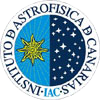Presentation

JEM-EUSO is a new type of observatory that uses the earth's atmosphere as a detector. JEM-EUSO will be on orbit on the International Space Station (ISS). It observes transient luminous phenomena taking place in the earth's atmosphere caused by particles coming from space. The sensor is a super wide-field telescope that detects extreme energy particles with energy above 3×1019 eV. This remote-sensing instrument orbits around the earth every 90 minutes on board of the International Space Station at the altitude of approximately 400km (Figure 1-1). The figure shows an extreme energy particle colliding with a nucleus in the earth's Atmosphere, where it produces an Extensive Air Shower (EAS), consisting of numerous electrons, positrons, and photons. JEM-EUSO captures the moving track, which is revealed by the fluorescent UV photons and reproduces the energy development of the EAS.
The JEM-EUSO telescope has a super-wide Field-of-View (±30°) with two double sided curved Fresnel lenses and records the track of an EAS with a time resolution of 2.5 microseconds and a spatial resolution of about 0.75 km (corresponding to 0.1 degrees). These time-segmented images allow the deermination of the energies and directions of the primary particles. The focal surface of the JEM-EUSO telescope is formed by about 6,000 multi-anode photomultipliers. The number of pixels is about two hundred thousand.
Spain has consolidated its position, since it began its participation in JEM-EUSO by 2007 and is responsible of the full design, prototyping, construction and AIV of the Infrared Camera of the Mission. The Spanish scientific community involved in JEM-EUSO is a multidisciplinar effort that involves scientific groups from IAC, UAH, UC3M and INTA that has been funded by MICINN and MINECO under projects AYA2009-06037-E/ESP, AYA-ESP2010-19082 and the coordinated projects AYA-ESP2011-29489-C03 and AYA-ESP2012-39115-C03.
These funds have allowed Spain to accomplish the Feasibility Study by December 2009, the Phase A Report by August 2010 and the Scientific Requirement Review by December 2011. The next milestone foreseen is the preparation of the Preliminary Design Review (PDR) to be delivered to RIKEN/JAXA during 2013.
In the XIII International meeting of the JEM-EUSO
collaboration we will discuss:
- Mission Status Overview
- Current state of the project as a whole.
- Science Objectives
- Scientific equipment status.
Contact: jemeuso@iac.es









